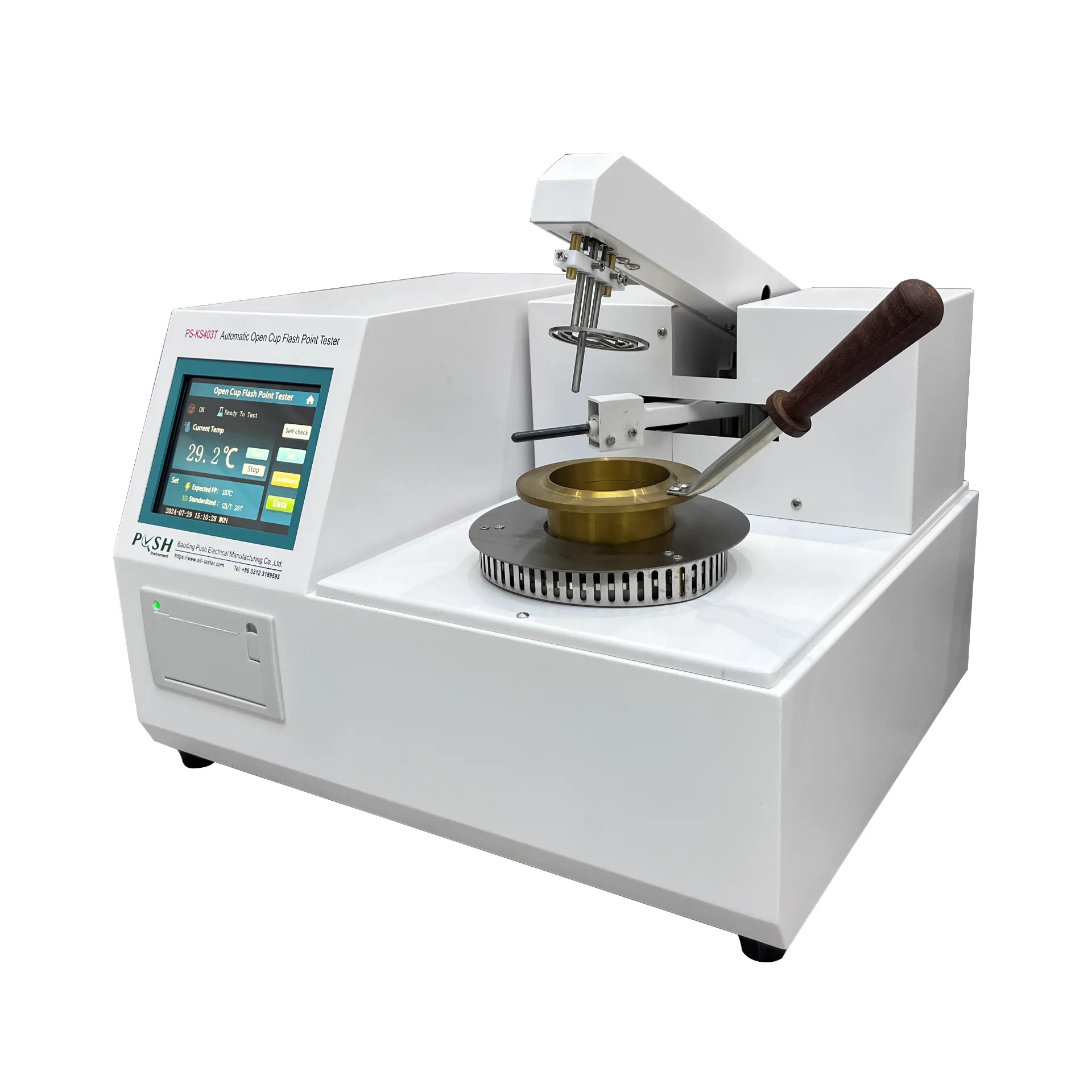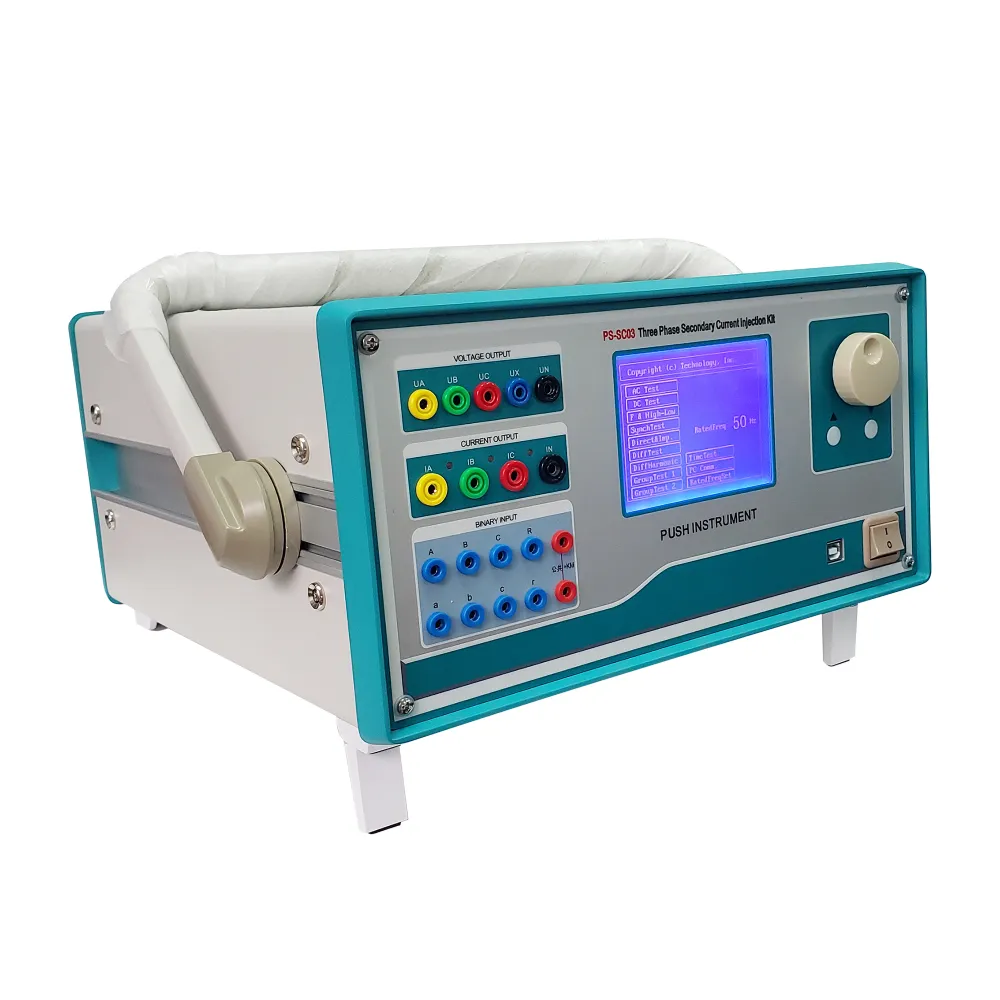TEL:
+86-0312-3189593
 English
English

Telephone:0312-3189593

Email:sales@oil-tester.com
2 月 . 16, 2025 05:16
Back to list
transformer voltage ratio test
Testing the voltage ratio of transformers is a critical step in ensuring the optimal performance and reliability of electrical power systems. This intricate process evaluates the transformer's voltage ratio, which essentially measures the proportional difference between the transformer's primary and secondary voltages. Conducting a transformer voltage ratio test requires a blend of technical knowledge, precision instruments, and industry expertise to guarantee accurate readings and maintain system integrity.
Post-testing, technicians are tasked with analyzing the collected data, comparing the actual voltage ratios to those specified in the transformer's design. Discrepancies in expected results may indicate potential internal failures such as winding issues, insulation failures, or connection errors. When abnormalities are identified, skilled professionals must employ troubleshooting techniques to isolate problems, often involving additional diagnostic tests like insulation resistance or vector group verification. Ensuring Accuracy Through Best Practices Accuracy is paramount in voltage ratio testing, necessitating strict adherence to best practices. This includes using calibrated equipment, conducting tests under stable conditions, and maintaining detailed records of each test for future reference. These records are vital for historical analysis, allowing engineers to detect progressive deterioration or emerging patterns that require attention. The Role of Experience in Effective Testing Experienced personnel bring invaluable insight to the voltage ratio testing process. Their comprehensive understanding of electrical systems and potential failure modes allows for accurate interpretation and a deeper understanding of the underlying causes of discrepancies. Furthermore, experienced testers often provide recommendations for corrective actions and maintenance strategies that enhance system reliability. Building Trust Through Results Documented results of voltage ratio tests offer an authoritative foundation for decisions regarding repair, replacement, or operational adjustments, fostering trust with stakeholders. Manufacturers and operators rely on these insights to optimize transformer performance and ensure safety, leading to minimized downtime and enhanced system efficiency. The transformer voltage ratio test's importance cannot be understated in the broader context of electrical power system management. By leveraging expert knowledge, advanced equipment, and rigorous testing protocols, professionals ensure the health and longevity of these critical components. This meticulous approach to testing not only affirms compliance and reliability but solidifies trust in the systems that power our world.


Post-testing, technicians are tasked with analyzing the collected data, comparing the actual voltage ratios to those specified in the transformer's design. Discrepancies in expected results may indicate potential internal failures such as winding issues, insulation failures, or connection errors. When abnormalities are identified, skilled professionals must employ troubleshooting techniques to isolate problems, often involving additional diagnostic tests like insulation resistance or vector group verification. Ensuring Accuracy Through Best Practices Accuracy is paramount in voltage ratio testing, necessitating strict adherence to best practices. This includes using calibrated equipment, conducting tests under stable conditions, and maintaining detailed records of each test for future reference. These records are vital for historical analysis, allowing engineers to detect progressive deterioration or emerging patterns that require attention. The Role of Experience in Effective Testing Experienced personnel bring invaluable insight to the voltage ratio testing process. Their comprehensive understanding of electrical systems and potential failure modes allows for accurate interpretation and a deeper understanding of the underlying causes of discrepancies. Furthermore, experienced testers often provide recommendations for corrective actions and maintenance strategies that enhance system reliability. Building Trust Through Results Documented results of voltage ratio tests offer an authoritative foundation for decisions regarding repair, replacement, or operational adjustments, fostering trust with stakeholders. Manufacturers and operators rely on these insights to optimize transformer performance and ensure safety, leading to minimized downtime and enhanced system efficiency. The transformer voltage ratio test's importance cannot be understated in the broader context of electrical power system management. By leveraging expert knowledge, advanced equipment, and rigorous testing protocols, professionals ensure the health and longevity of these critical components. This meticulous approach to testing not only affirms compliance and reliability but solidifies trust in the systems that power our world.
Previous:
Latest news
-
Differences between open cup flash point tester and closed cup flash point testerNewsOct.31,2024
-
The Reliable Load Tap ChangerNewsOct.23,2024
-
The Essential Guide to Hipot TestersNewsOct.23,2024
-
The Digital Insulation TesterNewsOct.23,2024
-
The Best Earth Loop Impedance Tester for SaleNewsOct.23,2024
-
Tan Delta Tester--The Essential Tool for Electrical Insulation TestingNewsOct.23,2024





